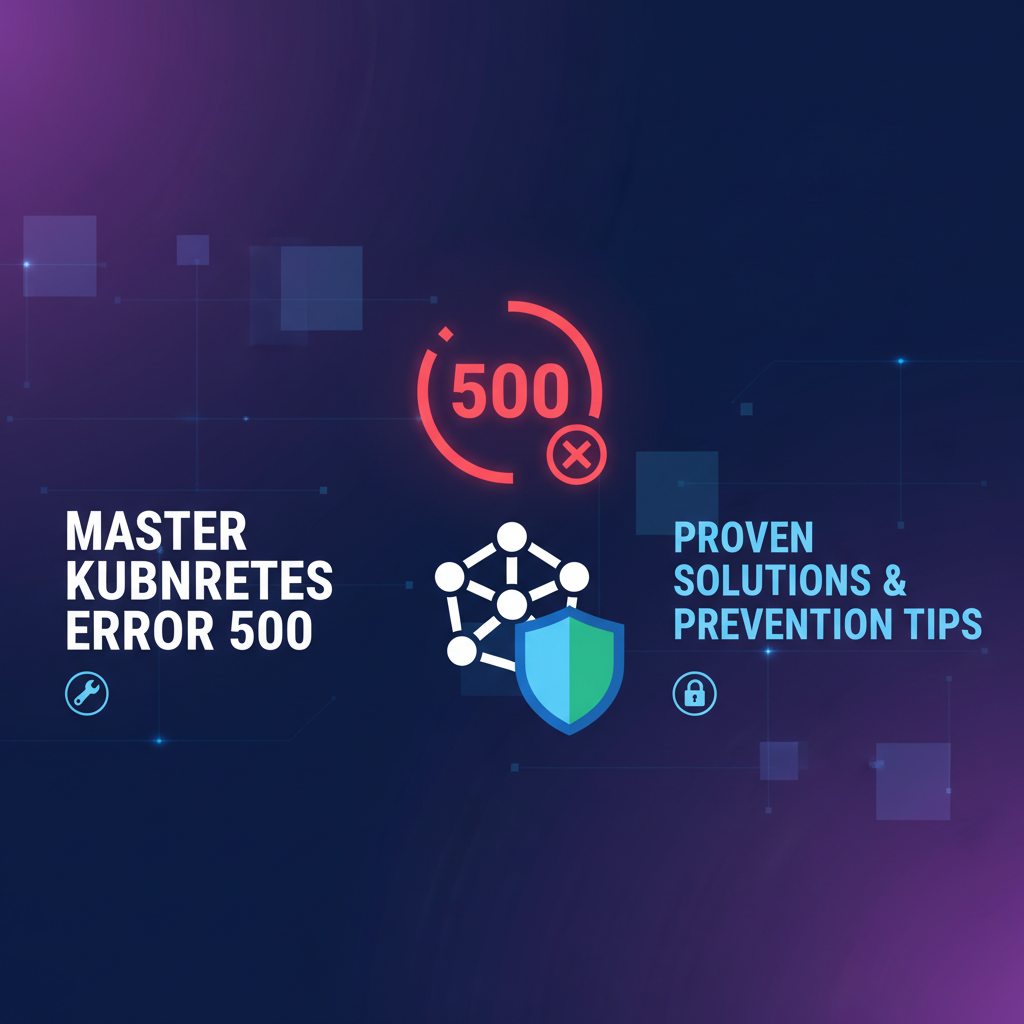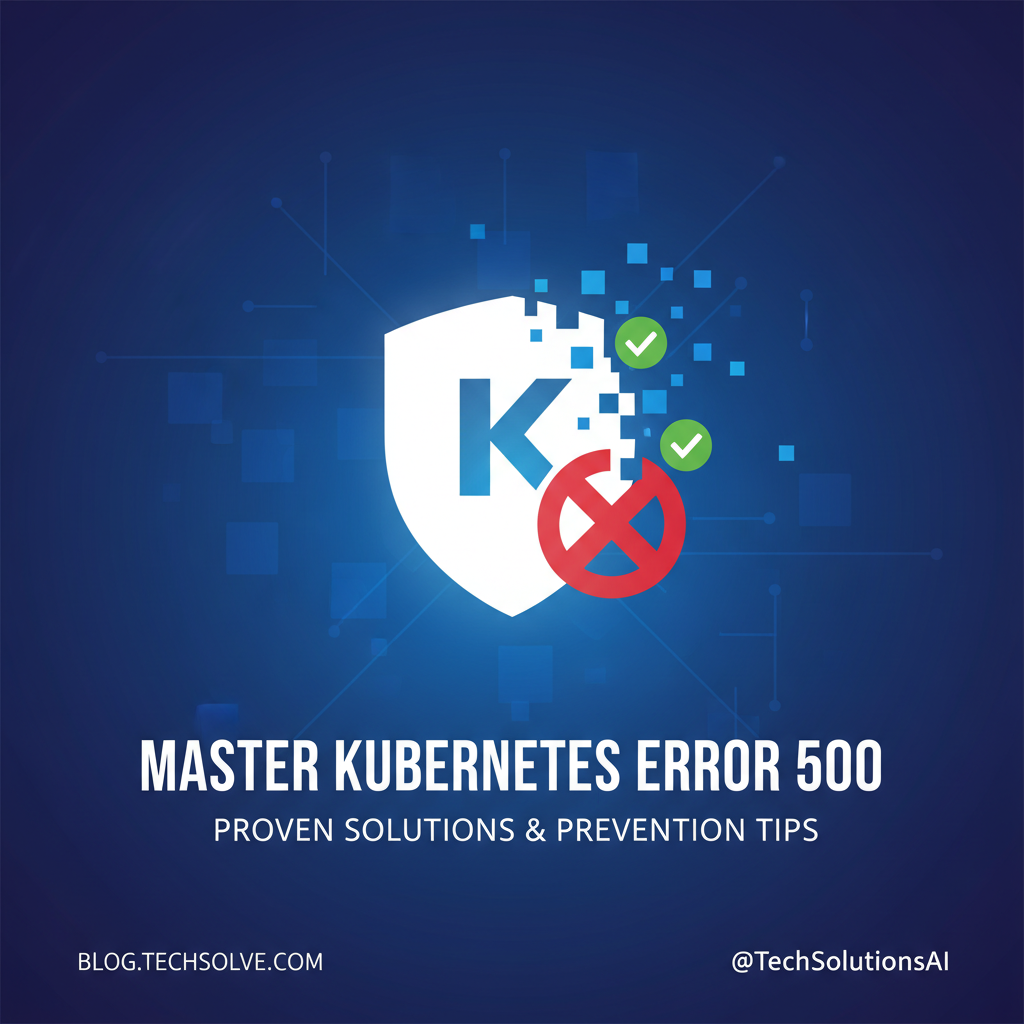Master Kubernetes Error 500: Proven Solutions & Prevention Tips

Introduction
Kubernetes, an open-source container-orchestration system, has become a cornerstone for modern cloud-native applications. However, even with its robust architecture, developers often encounter errors that can hinder their workflow. One of the most common errors is the Kubernetes Error 500, which can be a source of frustration and confusion. In this comprehensive guide, we will delve into the causes of this error, explore proven solutions, and provide prevention tips to ensure smooth operations in your Kubernetes cluster.
Understanding Kubernetes Error 500
What is Kubernetes Error 500?
The Kubernetes Error 500, also known as "Internal Server Error," is a generic HTTP status code indicating that the server encountered an unexpected condition that prevented it from fulfilling the request. This error can occur in various components of the Kubernetes system, such as the API server, controller manager, or etcd.
Common Causes of Error 500
- Configuration Errors: Incorrectly configured API server, controller manager, or other components can lead to this error.
- Resource Constraints: Insufficient CPU, memory, or disk space can cause the server to fail to process requests.
- Corrupted Data: Corrupted data in the etcd database can lead to inconsistent states and errors.
- Software Bugs: Sometimes, the error is due to a bug in the Kubernetes software itself or in the software of the underlying infrastructure.
- Networking Issues: Problems with the network stack can cause the server to drop requests or respond with errors.
Proven Solutions for Kubernetes Error 500
1. Verify Configuration
Start by checking the configuration files for any typos or incorrect settings. Ensure that the API server, controller manager, and other components are correctly configured.
Example: Checking API Server Logs
kubectl logs -n kube-system <api-server-pod-name>
2. Check Resource Constraints
Monitor the resource usage of your Kubernetes nodes. If you find that the nodes are running out of CPU or memory, consider scaling up the resources or optimizing the workloads.
Example: Checking Resource Usage
kubectl top nodes
3. Inspect etcd Database
Corrupted data in the etcd database can lead to various errors, including the Kubernetes Error 500. Use the etcdctl tool to check the health of the database.
Example: Checking etcd Health
etcdctl cluster-health
4. Update Kubernetes Software
Ensure that you are running the latest stable version of Kubernetes. Older versions may contain bugs that have been fixed in newer releases.
Example: Updating Kubernetes
kubectl apply -f https://storage.googleapis.com/kubernetes-release/release/$(curl -s https://storage.googleapis.com/kubernetes-release/release/stable.txt)/bin/linux/amd64/kubelet
5. Address Networking Issues
Check for any issues with your network stack. Ensure that the network policies are correctly configured and that the necessary ports are open.
Example: Checking Network Policies
kubectl get networkpolicy -n <namespace>
APIPark is a high-performance AI gateway that allows you to securely access the most comprehensive LLM APIs globally on the APIPark platform, including OpenAI, Anthropic, Mistral, Llama2, Google Gemini, and more.Try APIPark now! 👇👇👇
Prevention Tips
1. Regularly Backup etcd
Regular backups of the etcd database can prevent data loss and help you restore the cluster to a consistent state in case of corruption.
2. Monitor Resource Usage
Implement monitoring tools to keep an eye on the resource usage of your Kubernetes nodes. This can help you proactively address resource constraints before they lead to errors.
3. Use Robust Configuration Management
Use configuration management tools to ensure consistent and repeatable deployment of your Kubernetes cluster. This can help prevent configuration errors.
4. Implement Robust Networking Policies
Configure networking policies to control the traffic flow within your cluster. This can help prevent network-related errors.
5. Stay Updated
Keep up-to-date with the latest Kubernetes releases and security patches. Regularly review and update your cluster to benefit from the latest features and fixes.
APIPark: Simplifying Kubernetes Management
Managing a Kubernetes cluster can be complex and time-consuming. This is where APIPark comes into play. APIPark is an open-source AI gateway and API management platform designed to simplify the management of Kubernetes clusters.
Key Features of APIPark
- Quick Integration of 100+ AI Models: APIPark allows you to easily integrate a variety of AI models with your Kubernetes cluster.
- Unified API Format for AI Invocation: It standardizes the request data format across all AI models, simplifying AI usage and maintenance.
- Prompt Encapsulation into REST API: Users can quickly combine AI models with custom prompts to create new APIs.
- End-to-End API Lifecycle Management: APIPark assists with managing the entire lifecycle of APIs, including design, publication, invocation, and decommission.
- API Service Sharing within Teams: The platform allows for the centralized display of all API services, making it easy for different departments and teams to find and use the required API services.
How APIPark Can Help
APIPark can help you simplify the management of your Kubernetes cluster by providing a unified interface for managing APIs, AI models, and other resources. This can help you reduce the time and effort required to manage your cluster and focus on developing your applications.
Conclusion
The Kubernetes Error 500 can be a challenging issue to diagnose and resolve. However, by understanding the common causes and applying the proven solutions and prevention tips outlined in this guide, you can effectively address this error and ensure smooth operations in your Kubernetes cluster.
FAQs
Q1: How can I prevent Kubernetes Error 500 in the future?
A1: You can prevent Kubernetes Error 500 by regularly backing up etcd, monitoring resource usage, using robust configuration management, implementing robust networking policies, and staying updated with the latest Kubernetes releases.
Q2: What should I do if I encounter a Kubernetes Error 500?
A2: If you encounter a Kubernetes Error 500, start by verifying the configuration, checking resource constraints, inspecting the etcd database, updating the Kubernetes software, and addressing any networking issues.
Q3: Can APIPark help me manage my Kubernetes cluster?
A3: Yes, APIPark can help you manage your Kubernetes cluster by providing a unified interface for managing APIs, AI models, and other resources.
Q4: What are the key features of APIPark?
A4: The key features of APIPark include quick integration of 100+ AI models, unified API format for AI invocation, prompt encapsulation into REST API, end-to-end API lifecycle management, and API service sharing within teams.
Q5: How can I get started with APIPark?
A5: You can get started with APIPark by visiting their official website at ApiPark and following the deployment instructions provided.
🚀You can securely and efficiently call the OpenAI API on APIPark in just two steps:
Step 1: Deploy the APIPark AI gateway in 5 minutes.
APIPark is developed based on Golang, offering strong product performance and low development and maintenance costs. You can deploy APIPark with a single command line.
curl -sSO https://download.apipark.com/install/quick-start.sh; bash quick-start.sh

In my experience, you can see the successful deployment interface within 5 to 10 minutes. Then, you can log in to APIPark using your account.

Step 2: Call the OpenAI API.



